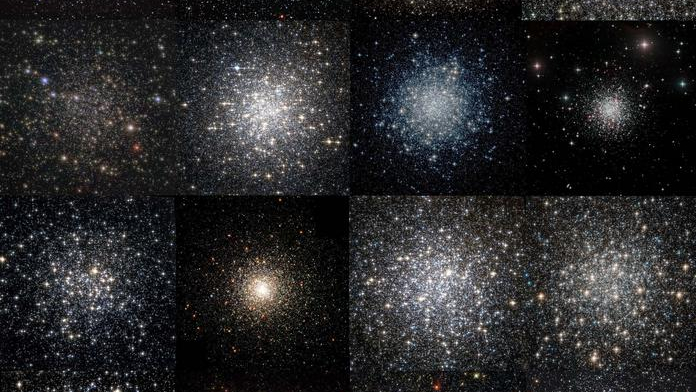
Looking out into the Milky Way, it's possible to see all sorts of strange cosmic structures — tentacle-like spiraling arms of stars in the outer regions of the galaxy, dark clouds of gas and dust that block out whatever sits behind them and jets of radiation shooting out from the supermassive black hole in the center.
You might also notice blobs of densely packed regions of stars — galaxies within galaxies, if you will. Astronomers know these blobs of stars as globular clusters, and they've been trying to decipher exactly how these stellar neighborhoods come into existence and evolve through time.
Now, an international group of researchers are the first to perform a 3D kinematic analysis of multiple stellar populations from a sample of 16 globular clusters in the Milky Way. The new research has provided astronomers with the most detailed description of how stars move within globular clusters, and the clusters' overall evolution from their formation to the present day.
Researchers collected data on the motions and velocities of stars within globular clusters using the European Space Agency's (ESA) Gaia spacecraft, the European Southern Observatory's Very Large Telescope (VLT) and other instruments, as part of the Multi Instrument Kinematic Survey (MIKIS), a spectrographic survey designed to explore the internal dynamics of globular clusters.
Related: What is a globular cluster?
The combined use of space-based and ground-based telescopes has provided the clearest picture of the velocity and distribution of stars in the targeted globular clusters to date, team members said.
"The results of our study provide the first solid evidence that globular clusters formed through multiple star-formation events and place fundamental constraints on the dynamical path followed by the clusters throughout their evolution," Emanuele Dalessandro, lead author of the new study, explained in a press release.
"These results were made possible by a multi-diagnostic approach and the combination of state-of-the-art observations and dynamic simulations," Dalessandro added.
Globular clusters are of particular interest to astrophysicists, as they can be 12 to 13 billion years old, which means they were some of the first structures that formed in the early universe. (The Big Bang that created the universe occurred about 13.8 billion years ago.)
Clusters are also typical in all galaxies. Astronomers know they contain different populations of stars, old and new, because of the metal content of those stars — the proportion of them made up of elements heavier than hydrogen and helium. (Older stars tend to have fewer such "metals.")
"In this work, we analyzed in detail the motion of thousands of stars within each cluster," Alessandro Della Croce, co-author of the study, said in the same release.
"It quickly became clear that stars belonging to different populations have distinct kinematic properties: Stars with anomalous chemical composition tend to rotate faster than the others within the cluster and progressively spread from the central regions to the outer ones," Della Croce added.
Dalessandro thinks that characterizing the behavior of stars within globular clusters could help answer some persistent questions about the formation and evolution of galaxies as a whole.
"Their astrophysical significance is huge," said Dalessandro, "because they not only help us to test cosmological models of the formation of the universe due to their age but also provide natural laboratories for studying the formation, evolution and chemical enrichment of galaxies."
While questions still remain, the new study — which was published last week in the journal Astronomy & Astrophysics — shines a bright new light on the behavior of these bustling galactic neighborhoods.







